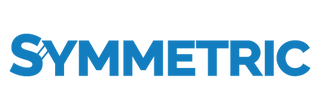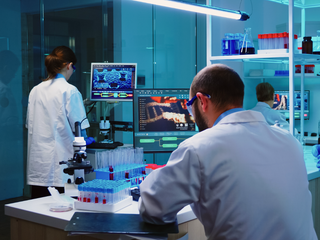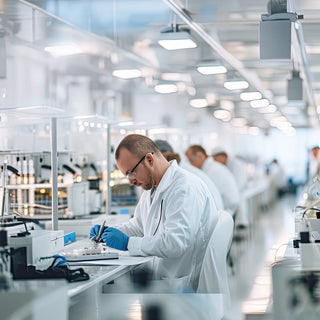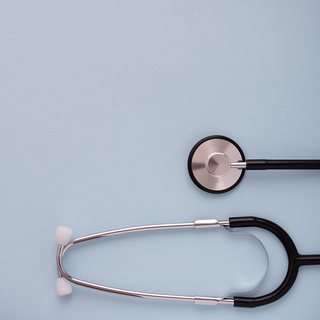Overview Of All Phases And Stages In Drug Development
Definition of Drug Development
Drug development refers to the systematic and highly regulated process of creating new pharmaceutical compounds or therapies for the treatment, prevention, or management of diseases. It encompasses a series of stages, beginning with the identification of potential drug candidates. These candidates are then extensively tested in preclinical studies to determine their safety and efficacy.
Subsequently, promising drug candidates advance to clinical trials, which are conducted in multiple phases of drug development involving human subjects. These trials are designed to rigorously assess the drug’s safety profile, dosing, and effectiveness. Throughout the development process, regulatory agencies play a critical role in evaluating and approving these new drugs for the market, ensuring that they meet rigorous standards for quality, safety, and efficacy.
The ultimate goal of drug development is to bring innovative, safe, and effective therapies to patients, improving their quality of life and addressing unmet medical needs. It requires a collaboration of pharmaceutical companies, research institutions, and regulatory bodies, and it involves significant time and resources.
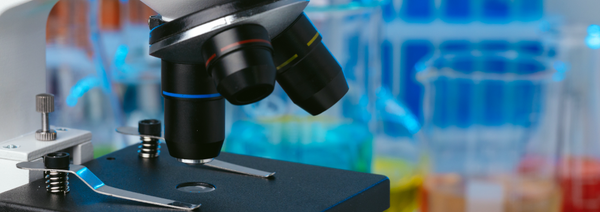
Importance of Drug Development in Pharma
The importance of the drug development process in the pharmaceutical industry cannot be overstated, as it lies at the core of the industry’s mission to improve public health and well-being. Drug development plays a pivotal role in several crucial aspects:
1. Healthcare Advancement: The primary objective of drug development is to create innovative medicines that can diagnose, treat, prevent, or manage a wide range of diseases and medical conditions. These drugs have the potential to extend and enhance the lives of patients, addressing both common and rare diseases.
2. Economic Impact: The pharmaceutical industry is a significant contributor to the global economy. Drug development generates jobs, fosters innovation, and stimulates economic growth in terms of research, manufacturing, distribution, and healthcare services.
3. Patient Care: New drugs often provide more effective and safer alternatives to existing treatments, reducing side effects and improving patient outcomes. This is particularly vital in managing chronic and life-threatening diseases.
4. Public Health Response: Drug development is instrumental in responding to emerging health threats, such as infectious disease outbreaks or global health crises. It allows for the rapid development of vaccines and treatments to protect populations.
5. Lifespan Extension: Drug development has been a major driver of increased life expectancy over the years. It helps address the healthcare needs of an ageing population by creating medications that manage age-related and degenerative conditions.
6. Innovation and Competition: The constant pursuit of new drug candidates fosters innovation and competition within the pharmaceutical industry, ultimately resulting in a wider array of treatment options for patients and often leading to reduced costs.
In summary, drug development is the lifeblood of the pharmaceutical sector, driving medical advancements, economic growth, and improved patient care. It represents a critical link in the chain of healthcare delivery and plays a pivotal role in the betterment of global public health.
Phases and Stages of Drug Development
The development of a new drug is a complex, multifaceted process that follows a series of well-defined phases and stages of drug development, each marked by distinct objectives, scientific rigor, and regulatory oversight. These phases of drug development ensure that a potential pharmaceutical compound is thoroughly evaluated for safety, efficacy, and quality before it can be approved for clinical use. The drug development process typically consists of the following phases:
Phase 0: Exploratory Phase
This phase represents the earliest stage of the drug development process. It involves very limited human exposure to the experimental drug. The primary goal is to gather initial data on the drug’s pharmacokinetics (how the body processes the drug) and pharmacodynamics (how the drug affects the body). Phase 0 is optional, and it may help in decision-making regarding further development.
Phase I: First-in-Human Trials
Phase I clinical trials mark the initial step into human testing. These trials are conducted on a small group of healthy volunteers or individuals with the targeted disease. The primary objectives are to assess the drug’s safety, tolerability, dosage range, and pharmacokinetics. Phase I trials help establish the drug’s initial safety profile and dosing.
Phase II: Proof of Concept
Phase II trials expand the patient population and aim to establish the drug’s effectiveness while continuing to assess safety. These trials typically involve a larger number of patients and are more rigorously controlled. Researchers use Phase II data to determine the drug’s optimal dose and to identify specific patient populations where it demonstrates the most promise.
Phase III: Pivotal Trials
Phase III trials are extensive, randomized, and controlled studies conducted on large patient populations. They confirm the drug’s efficacy, safety, and overall benefit-risk profile. This phase provides the data required for regulatory submissions. Positive results from Phase III are crucial for gaining drug approval.
Regulatory Submission and Review
After the successful completion of Phase III trials, pharmaceutical companies submit a New Drug Application (NDA) or equivalent documentation to regulatory authorities. This submission includes comprehensive data on the drug’s safety, efficacy, manufacturing processes, and proposed labeling. Regulatory agencies conduct thorough reviews to determine if the drug meets the necessary standards for approval.
Phase IV: Post-Marketing Surveillance
Phase IV, also known as post-marketing surveillance, takes place after the drug has been approved and is on the market. It involves ongoing monitoring of the drug’s safety and effectiveness in a larger patient population and over a more extended period. This phase aims to identify any rare or long-term side effects that may not have been evident in earlier trials.

Stages Within Each Phase
Within each phase of drug development, there are specific stages of drug development that help organize and manage the process:
1. Planning and Preclinical Research: Before moving to Phase 0 or Phase I, extensive laboratory and animal studies are conducted to identify potential drug candidates and establish initial safety and efficacy profiles. This stage also includes the development of a detailed research plan.
2. IND (Investigational New Drug) Application: Before initiating Phase I trials, a pharmaceutical company must submit an IND application to regulatory authorities. This application includes data from preclinical studies, a detailed clinical trial plan, and information about the drug’s manufacturing processes.
3. Clinical Trial Design: During Phase I, II, and III, detailed protocols are developed for each clinical trial, including the number of participants, dosing schedules, and specific endpoints for evaluation.
4. Patient Recruitment and Enrollment: Patient recruitment occurs at the beginning of each trial and involves selecting individuals who meet the specific criteria for the study. Enrollment continues throughout the trial until the required number of participants is reached.
5. Data Collection and Analysis: Throughout each phase, extensive data is collected on safety, efficacy, and other relevant parameters. Data is rigorously analyzed to determine the drug’s performance.
6. Regulatory Submissions: For Phase III, the regulatory submission includes the NDA or equivalent documentation, which undergoes a comprehensive review by regulatory agencies. These reviews are meticulous and involve expert evaluation.
7. Post-Approval Activities: Following drug approval, companies and regulatory agencies continue to monitor the drug’s safety and efficacy through pharmacovigilance programs and post-marketing studies.
It’s important to note that the drug development process is lengthy, expensive, and associated with a high rate of attrition. Many potential drug candidates do not make it past the preclinical phase, and even those that enter clinical trials may fail to meet safety or efficacy criteria. However, a successful drug development process and its’ results in innovative medications that improve healthcare, address unmet medical needs, and contribute to the advancement of medical science. The rigorous evaluation at each phase and stage of development is essential to ensure that only safe and effective drugs reach the market.
